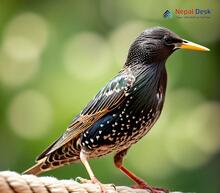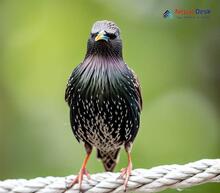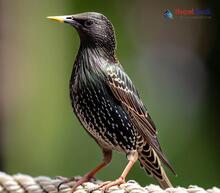Bird enthusiasts and researchers are captivated by the incredible world of avian species. Among these diverse birds, the Sturnus genus holds a unique place in many people's affection. These intriguing creatures have held the attention of scientists for years due to their fascinating relationships, evolutionary connections, and genetic heritage. In this article, we'll delve into these enthralling aspects of the Sturnus genus and uncover the marvels of these spectacular birds.
Exploring the Sturnus Genus
Belonging to the Sturnidae family, the Sturnus genus encompasses several closely related starling species. It goes back to the early Miocene epoch. Renowned for their gleaming feathers, resounding songs, and amiable social behavior, these medium-sized songbirds display both significant differences and similar characteristics among species.
Over the years, systematic studies have employed methods such as shape analysis, molecular data interpretation, and ecological examination to determine relationships within this genus. Some famous species include the Common Starling (Sturnus vulgaris), Spotless Starling (Sturnus unicolor), Rosy Starling (Sturnus roseus), and White-faced Starling (Sturnus albofrontatus). Comprehending their classification enables us to learn about their evolutionary ties and potential ecological interactions between species.
Deciphering Evolutionary Links in the Sturnus Genus
Sharing a common ancestor with other family members, the Sturnus genus hints at an engrossing evolutionary past. Fossils suggest that early starlings existed around 20 million years ago during the early Miocene period. As continents shifted and climates transformed, ancient starlings evolved into distinct forms that acclimated to new surroundings. This elaborate process has culminated in today's incredible range of Sturnus species.
Genetic Heritage: Examining the Starling Family Tree
Studying the genetic history of the Sturnus genus enhances our understanding of their evolution. Thanks to advancements in molecular biology, scientists can now investigate the mitochondrial DNA of various starling species. Comparing the similarities and differences in genetic sequences allows researchers to construct family trees depicting relations between species.
Genetic research often reveals fascinating connections between distant starling populations, illustrating how migration and natural selection impacted starlings' distribution and genetic ties. Recent discoveries in this field might even help us better comprehend starling evolution while identifying places where conservation initiatives are most needed.
Recognizing Sturnus Species' Signature Traits
While each Sturnus species possesses unique characteristics, they also share certain attributes:
- Feathers: Their feathers typically shimmer in sunlight, giving them a stunning appearance.
- Size: Starlings usually have a robust build, lying between small and medium size with strong legs.
- Sounds: These birds boast an impressive array of sounds and can mimic numerous noises, even human speech when kept as pets.
- Social life: Starlings are quite social, often forming large groups to roost and dine together.
Discovered in Nepal – Sturnus Species
In the breathtaking scenery of Nepal, you may encounter a Sturnus member – the Common Myna (Sturnus tristis). This adaptable bird is frequently seen in urban and suburban areas, nesting in tree holes or even buildings. As omnivores, they feed on insects, fruits, and even human leftovers. The presence of Common Mynas in Nepal raises concerns about their impact on native birds due to competition for resources like food and shelter.
In conclusion, the Sturnus genus comprises a charismatic collection of birds with alluring attributes and behavior patterns.




